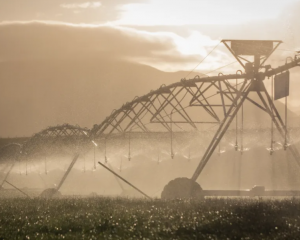
North Otago farmers are enlisting top-level help to find out where their phosphate problem lies.
The North Otago Sustainable Land Management (Noslam) group has asked University of Otago hydrologists to find the sources of the Waiareka Creek catchment's increasing phosphate levels.
It hopes the results will show landowners where improvements could be made so they meet the water quality regulations taking effect next year.
Noslam called a meeting of farmers, landowners, and stakeholders in the catchment last week to outline the scheme and seek their co-operation.
Chairman Peter Mitchell told the 40 attendees that University of Otago staff would carry out water sampling at 70 sites and soil sampling at 19 sites.
The work was being funded by the North Otago Irrigation Company, but Mr Mitchell pointed out it was ''not just an irrigation situation''.
''It's a full catchment issue we all need to address together. Everybody's got to get on board.
''We want to find out where the phosphorus is coming from. We hope we get good answers. We may raise some more questions as well.''
University of Otago geography department hydrologist Dr Sarah Mager said the project would evaluate whether organic or inorganic phosphorus deposits in the riverbed and banks were potential sources of the phosphorus in the waterways.
''The phosphorus cycle is closely related to the sediment cycle,'' she said.
It had a much slower turnover than the nitrogen cycle, and sediment took phosphorus with it.
Because phosphorus has no isotopes, no-one could tell how along ago it was deposited at any site.
''That's why we have to take the sediment approach.''
Soil samples and river sediment samples would be collected once, and water samples would be collected twice.
The work would start next month and results should be available by midwinter, Dr Mager said.
She asked for farmers with free-flowing springs, areas of concern, or details of historic use of fertilisers in the catchment to come forward.
She also wanted to take samples from different land covers in different parts of the catchment - winter fodder, mixed grazing, sheep grazing, dairy grazing, tussock and forestry.
Noslam member Lyndon Strang said the study was independent, instigated by the group in the interests of sustainable land use.
''If you're hesitant, the soil samples and water samples won't be public information that can be used against you. We're not focusing on any one problem area or land use type. It's not a witch hunt.''
If the area's natural phosphorus levels were found to be high, Noslam could take the findings to the Otago Regional Council and make a case for adjusting permitted levels under the new water quality standards, Mr Strang said.














